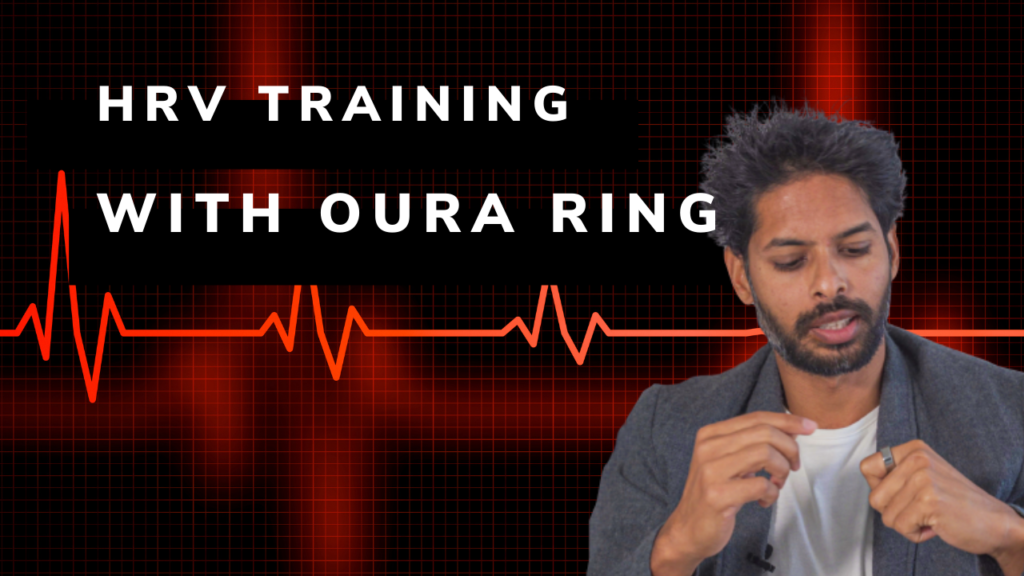HRV biofeedback training with the Oura ring to lower stress, anxiety and improve performance
I don’t meditate.
Let me explain why. I didn’t end up studying neuroscience by accident. I got into neuroscience because I was fascinated about the performance of our brain and body. I started meditating relentlessly when I first discovered it at the age of 19. Contrary to popular belief, meditation was anything but relaxing. It only bought to the surface the destructive and self loathing thought patterns that up till then only ran under the surface.
Thus began the excruciating process of observing the mind to weed out negative thought. Thoughts are like seeds which grow roots deep within the body. Mindset, positive psychology and shifting focus was never the answer because the mind was never the problem. To address the problem I had to get to the root cause itself – why was I having negative thoughts in the first place?
I got into neuroscience because I wanted to understand why meditation only worked sometimes or was it simply a matter of practice. Fast forward 20 years and people are surprised when I say I don’t meditate. They ask, how do you stay so calm? Why are you always relaxed? Why don’t you have a ritual, routine or practice!
I have even been paid on numerous occasions to teach meditation, despite my repeated refusal.
The various forms of meditation can be roughly categorised into Mindfulness, breathing practices and introceptive awareness. These categories are not mutually exclusive and most meditation practices include some combination of these categories.
As a neuroscientist, I wasn’t interested in dogmatic traditions, exhaustive practices or glorified coping mechanisms. My interest was tactical and utilitarian. I wanted something quick, simple and effective. The evidenced based research which eventually formulated my Train your Nervous System program exceeded even my own expectations. Not only could I train people to neutralise the reflexive threat response, I was also able to train the nervous system to anticipate stress and self-regulate in real-time.
Let me show why I don’t meditate and how you too can enjoy the benefits of a calm, clear and creative mind.
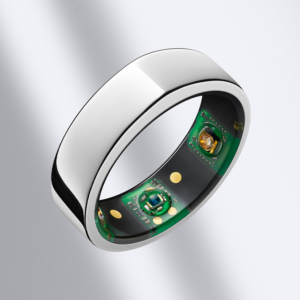 First we require a tool to show specific, measurable and tangible results. These tools come in two categories – mindware devices that detect brain waves such as EEG headbands and wearable HRV monitors. I wanted the measurement tool to be tactical and utilitarian to fit in with my teaching approach.
First we require a tool to show specific, measurable and tangible results. These tools come in two categories – mindware devices that detect brain waves such as EEG headbands and wearable HRV monitors. I wanted the measurement tool to be tactical and utilitarian to fit in with my teaching approach.
I eventually settled on the Oura Ring for three reasons:
- The HRV recording from the Oura ring is comparable to the recordings from a clinical grade electrocadiogram (ECG). The Oura ring measures your heart rate through
Infrared Photoplethysmography (PPG) sensors. Because these sensors measure arterial blood flow, the device is susceptible to movement. As such, when recording biometric data, you must maintain still for precise calibration and minimise outliers or missing data due to movement. Although, this limits the usability of the Oura ring, I was willing to make this compromise for the following two reasons.
- Aesthetics matter. The durability and comfort of a wearable determines how often you wear it. The idea of a bluetooth mindwear around my brain wasn’t appealing. The Oura ring passes as an inconspicuous jewellery and unless you know what it is, no one ever notices.
- The device is non-invasive. Unlike other biometric wearables such as an Apple watch, which provides an onslaught of notifications and haptic feedback, the Oura ring has no wires, buttons or blinking lights. I keep the device on flight mode which means I don’t have to charge the Oura ring for weeks. As for monitoring HRV, I don’t have to worry about measuring any personal bests as the vary nature of HRV means that it is all about variability. The measure only makes sense when you observe it at a trend level, like how was your HRV when you went camping for four days and slept under the stars?
I would suggest considering the above points when selecting your wearable device of choice. Now let’s have a look at why HRV is relevant to your meditation practice. Simply put, the brain can rest when we fall asleep, a person can even survive under a vegetative state, the heart however does not have this option. The heart is like a running clock, it can’t be paused. The heart rests by slowing down, and when it does, our entire nervous system – autonomic and central gets the opportunity to rest and recover.
What is your resting heart rate and how often does your heart return to baseline?
It is well understood that high HRV is indicative of great mental health and physical performance. Low HRV is associated with illness – mental, physical and physiological. When your HRV is high, you can seamlessly transition between sympathetic (fight or flight) or parasympathetic (rest and restorative) states. In other words, it reflects the adaptability of your nervous system – how you respond to a threat and how quickly does your heart rate decelerate to baseline.
The Experiment.
For this experiment, I chose to test three meditative techniques and it’s effects of Heart Rate Recovery (HRR). In other words, how effective is the meditation practice is in returning your heart rate back to baseline. Each trial started with me doing 10 ring push-ups followed by immediately tracking my heart rate through the Oura App.
Trial #1 – No Meditation
The first trail was to observe my Heart Rate Recovery (HRR) without any mediation. I simply set cross legged with my eyes open and reflected upon my life. My heart rate started at 75 bpm and took approximately 3.5 minutes to drop to 59 bpm and gradually levelled off around 67 bpm.
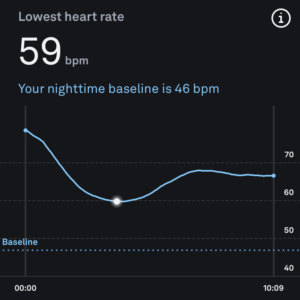
Trail #2 – Mindfulness meditation – in-built in the Oura App.
For the second experiment, I chose to use the in-built meditation in the Oura ring app. This meditation lasted 10 minutes and it took about 4 minutes for my heart rate to drop to it’s lowest point of 69 bpm, after which it started to rise again.
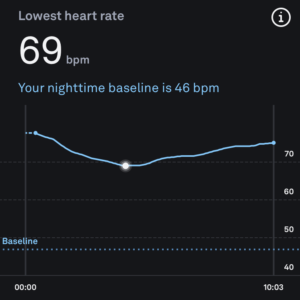
Trail #3 – 21 Breaths exercise – in-built in the Oura App.
This time, I used the in-built breathing exercise in the Oura ring app. This meditation lasted eight minutes and it took about 3.5 minutes for my heart rate to drop to 69 bpm. My heart rate began to rise after the dip and stabilised around 72 bpm.
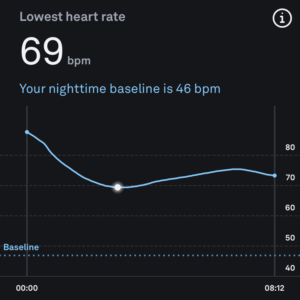
Trail #4 – Vagal Breathing Exercise from the Train Your Nervous System Program
For the last trail, I used my own vagal breathing exercise and this had the most dramatic deceleration, starting at 83 bpm and dropping to 63 bpm within 2 mins. My heart rate remained at a baseline of 69 bpm for the entire duration of the 15min meditation. Full disclaimer that I am biased when I say this – the vagal breathing exercise, without a doubt had the most immediate and effective response.
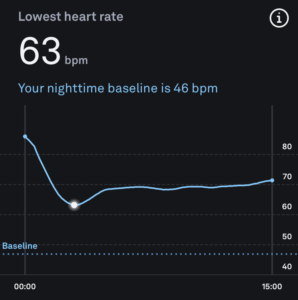
The most profound effects are seen when you compare HRV. Mindfulness and 21 Breaths meditation show HRV decay not much different to no meditation at all. Vagal breathing however, showed the most rapid deceleration and remained at resting state throughout the duration of the meditation. The vagal breathing technique also had the highest HRV difference, dropping from 78 ms baseline to 45 ms.
High HRV is indicative of a highly responsive nervous system.
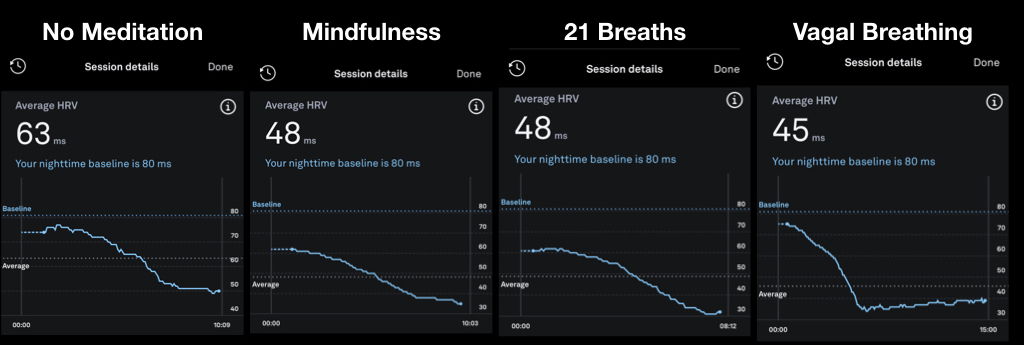
Make no mistake, meditation provides a sense of connection and community when done in a group setting, in a candle lit room, with perfect music but sooner or later, reality comes crashing in. When you by yourself, freaking out, can’t switch off, anxious or having a panic attack at 4am, you don’t have the luxury of indulging in philosophies or waiting for the next meditation class or Vipassana retreat. You want a utilitarian, evidence-based approach that is quick, simple and effective to clear your thoughts and calm yourself in realtime.
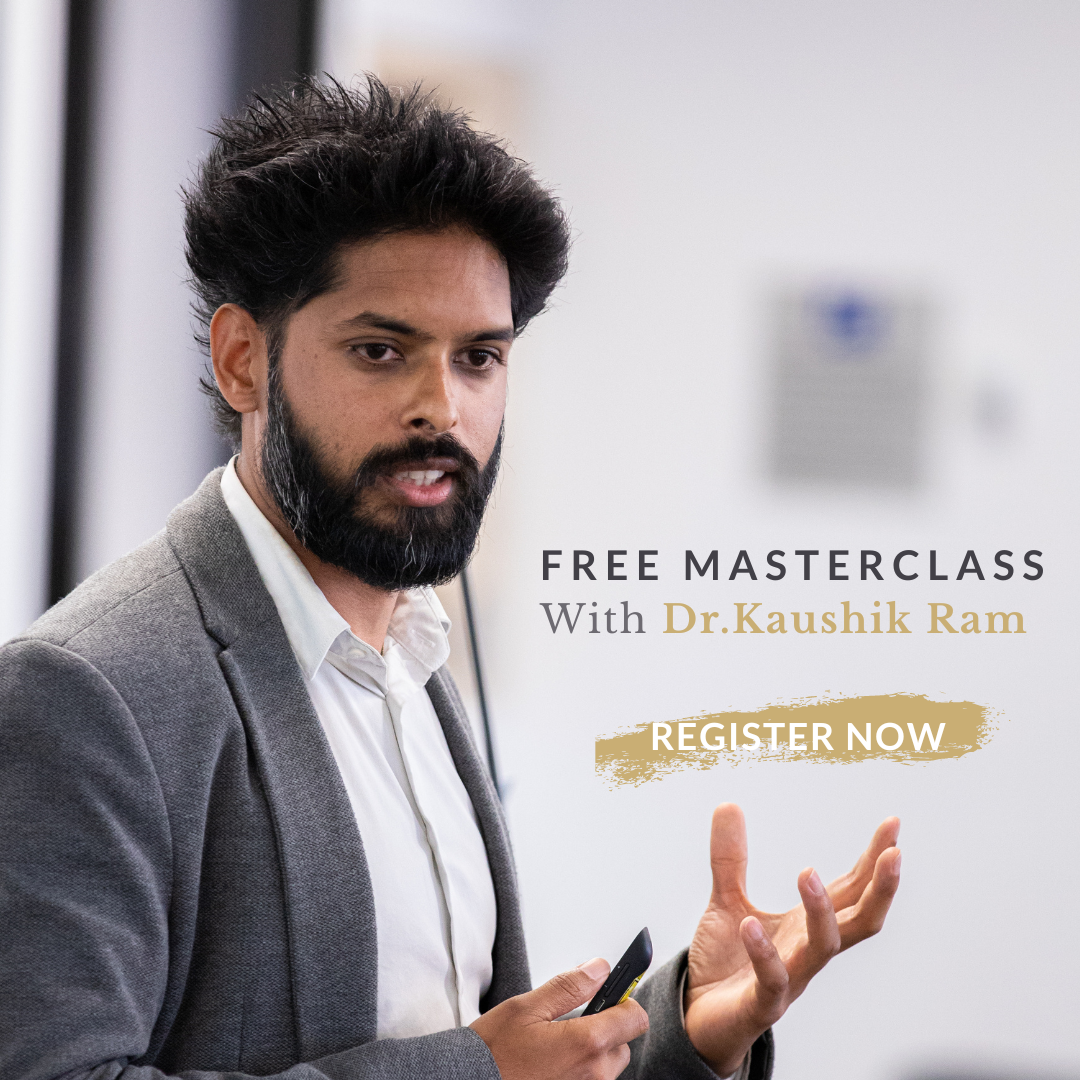
Use My Proven Nervous System Training Trusted by Busy Executives to Eliminate Anxiety Permanently!

